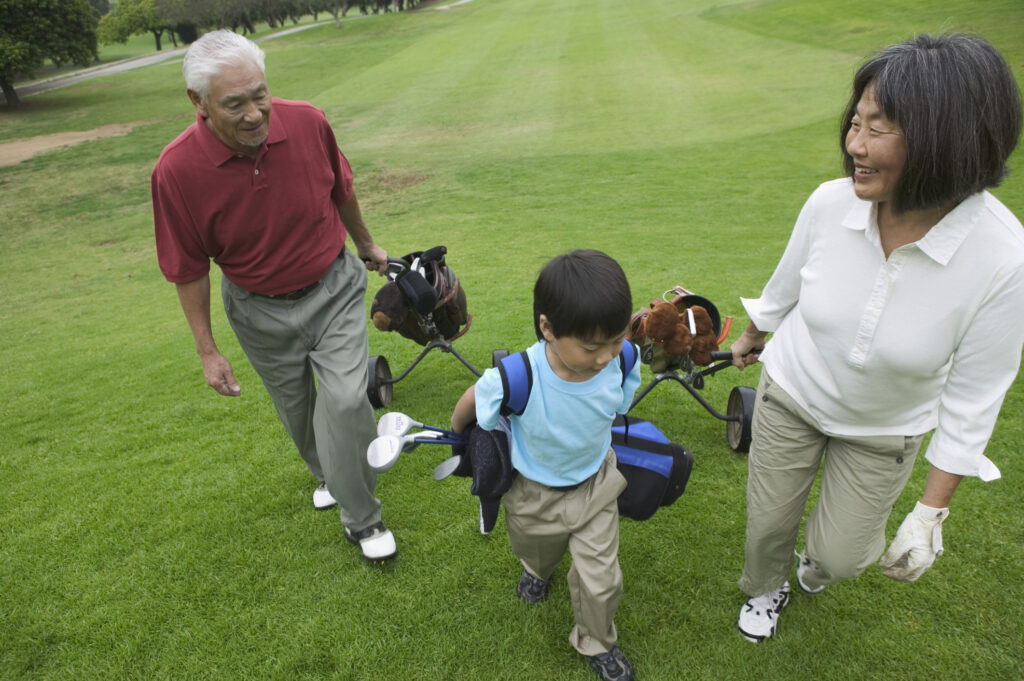Swing Into PT for a Better Golf Game

It’s National Golf Month! Hank Aaron noted that it took 17 years for him to get 3,000 hits in baseball, but only one afternoon on the golf course. Author John Updike compared the golf swing to a suitcase where we try to pack too many things. And Mark Twain famously remarked that “Golf is a good walk spoiled.” Despite the whining, golf is a popular sport, with 112 million people – that’s one-third the U.S population – engaging with the activity in 2022. More than 41 million Americans over age 6 play the sport.
If you are one of the newly anointed or even if you have devoted years to the sport, think about adding physical therapy (PT) to your training. It could help improve your game. Here are three ways PT can ensure your performance on the course is not subpar.
- Flexibility. The golf swing involves the entire body in a complex rotation to send the ball on its path. The greater the player can twist their upper body, the faster the club hits the ball and the farther the ball can travel. Research on skilled golfers has shown that flexibility in the player’s chest, abdomen, pelvis, and back impacted club speed in the swing. Physical therapists are movement experts. They can teach you how to use stretches and other exercises to achieve a better range of motion in the trunk while ensuring your joints move without restriction or pain.
- Balance. A balanced swing doesn’t just look graceful—it ensures control and accuracy. It’s also essential to creating a consistent, reliable performance. The body’s systems for balance include visual cues, inner ear vestibular structures, and spatial awareness. Physical therapists can check your balance and identify where improvements may be needed. For example, they can evaluate how your body moves as it shifts weight, which is critical during a golf swing. Then, exercises can be recommended to specifically improve your balance.
- Core strength. Free rotation and steady balance are not the only elements of a good golf swing; you also need power. And power comes from your core strength and stability. The core refers to the muscles in the center section of your body that surround the spine, abdomen, and hips. It’s key in golf as you move the swing from behind you, forward, and then through impact on the ball. Physical therapists can use data from simple tests, like the McGill core endurance test, to determine what would help improve the core’s functionality.
Physical therapy is known for helping individuals return to activities after an injury, but it can also help prevent injuries by improving mobility, flexibility, strength, and balance. Any way you slice it, PT can help your golf game!
![CPT Rehab [logo]](https://www.cptrehab.com/wp-content/themes/cpt-rehab/images/logo.png)